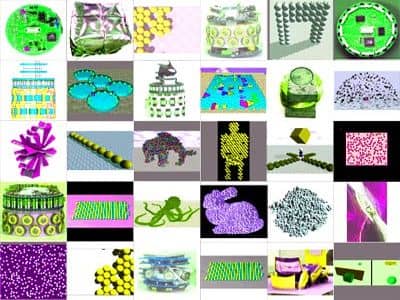Claytronics is an abstract concept that exists at the intersection of nanotechnology, computer science, and robotics. It is an abstract future concept that combines nanoscale robotics and computer science to create individual nanometer-scale computers called claytronic atoms, or catoms, which can interact with each other to form tangible 3D objects that a user can interact with. It is taking place across a rapidly advancing frontier. This idea is more broadly referred to as programmable matter. This technology will help to drive breathtaking advances in the design and engineering of computing and hardware systems.
Claytronics is a futuristic concept which aims to break the barriers of physical limitation of tangible 3D objects.
Claytronics has the potential to greatly affect many areas of daily life, such as telecommunication, human-computer interfaces, and entertainment. It is concerned with the development of autonomous robots, the size of a few nanometres. These nano-robots, called Claytronic atoms or catoms, can interact with each other to form three dimensional, dynamic objects that cannot only be seen and heard but also touched and felt.

Current research
Claytronics is a system designed to implement the concept of programmable matter, that is, material that can be manipulated electronically in three dimensions in the same way that two-dimensional images can be manipulated through computer graphics. Current research is exploring the potential of modular reconfigurable robotics and the complex software necessary to control the “shape-changing” robots. “Locally Distributed Predicates or LDP is a distributed, high-level language for programming modular reconfigurable robot systems (MRRs)”.
The creation of claytronics technology is the bold objective of collaborative research between Carnegie Mellon and Intel, which combines nano-robotics and large-scale computing to create synthetic reality, a revolutionary, 3-dimensional display of information. There are many challenges associated with programming and controlling a large number of discrete modular systems due to the degrees of freedom that correspond with each module. For example, reconfiguring from one formation to one similar may require a complex path of movements controlled by an intricate string of commands even though the two shapes differ slightly. The vision behind this research is to provide users with tangible forms of electronic information that express the appearance and actions of original sources.
Today, extensive research and experiments with claytronics are being conducted at Carnegie Mellon University in Pittsburgh, Pennsylvania by a team of researchers which consists of Professors Todd C. Carnegie Mellon is also researching how to power the catoms using magnetic resonance coupling (having each catom convert a magnetic field into electricity). Catoms will be so small that electric forces will be more important than gravity so they’re using helium-filled cubes to test how catoms will work when gravity is no longer the dominant force. Mowry, Seth Goldstein, graduate and undergraduate students, and researchers from Intel Labs Pittsburgh.
















